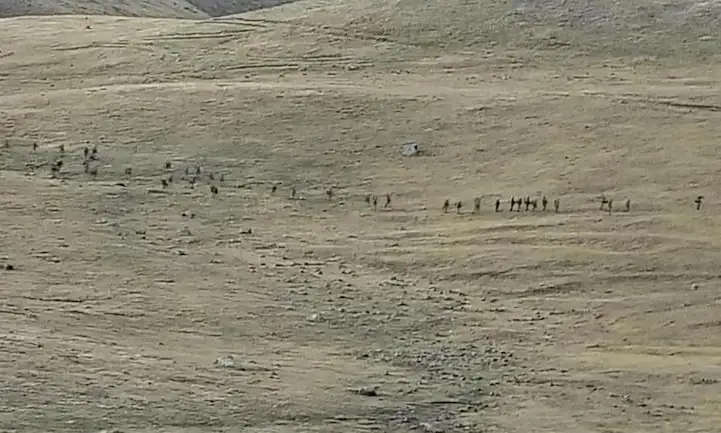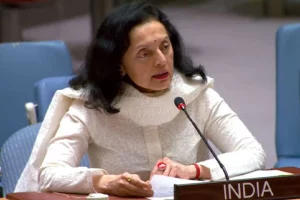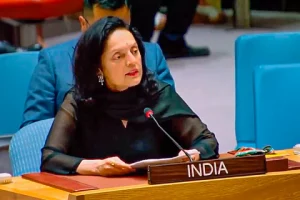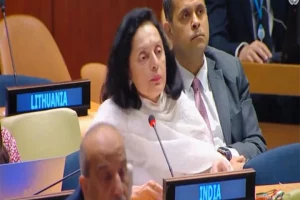On the night of 13 September, the armed forces of Azerbaijan launched a large-scale attack in the eastern and southeastern regions of Armenia. According to official Armenian sources, the attacks involved the use of “artillery, mortars and UAVs”.
Tensions had been building up for months prior to the clashes. While the Karabakh war two years ago may have helped to define the territorial control of Azerbaijan on the Armenian majority enclave, little else in assuaging the bitterness between the two countries had been accomplished. Not only have tensions remained simmering, but, if anything, feelings of a primordial antagonism have actually increased. Several issues remain unresolved, prime amongst them the ill-treatment and torture of Armenian prisoners of war and detainees in Azerbaijan, as well as the loss of Azerbaijani lives because of the land mines littered across the territory of Azerbaijan.
The recent flare-up, which has claimed more than 100 Armenian and 75 Azerbaijani lives, however, has several other geo-political components. Flush with victory in the Karabakh war, a victory which came after 20 long years, Azerbaijan wants to negotiate with Armenia from a position of strength, before it is too late. To that end, it does not feel compelled to enter into any discussions on the status of Karabakh Armenians inside Azerbaijan. For all purposes, for Azerbaijan the question has resolved itself with the victory and reinforcement of Azerbaijan’s claims and control on the enclave. It now seeks to launch a counter-attack by laying claims to Armenian territory. In particular, the Zangezur Corridor has become the centre of its focus.
The Zangezur corridor in Armenia is a critical land border for Iran. If Azerbaijan attempts to capture this territory, Iran risks having its connection to the Caucasus & beyond to Europe controlled by Azerbaijan & Turkey. pic.twitter.com/ExVjnxJMYi
— Sina Toossi (@SinaToossi) September 13, 2022
What is the Zanagezur Corridor?
The Zangezur Corridor is an overland transport corridor that Azerbaijan would like to have, which would connect it to the Azerbaijani exclave of Nakhichevan in western Armenia and onward to Turkey without Armenian border control over it. It cuts through Armenia’s southernmost province of Syuni which borders Iran’s Azeri provice in the north. Azerbaijan has been pushing for this corridor for sometime, and with its victory in Karabakh now seems to be aggressively pursuing this objective.
The agreement reached between the two Southern Caucasian neighbours at the end of the 2020 war had provided for land access for Azerbaijan to the Azeri enclave of Nakhichevan in Western Armenia, on the border with Turkey. While Armenia interprets this as opening up a road access, Azerbaijan wants it to be a “corridor” without any Armenian customs or border control over it. On 24 April in an interview to the Azerbaijan media, President Ilham Aliyev had said that Azerbaijan would realize the Zangezur corridor whether Armenia agreed to it or not, either peacefully or by force.
It is here that several geo-political factors come into play. Azerbaijan is helped and egged on in its pursuit of this corridor by its pal Turkey as it would give the latter direct land access to Azerbaijan, Iran, and further to the Caspian Sea and the Central Asian countries. This is where Iran is peeved, as, if implemented, the corridor can cut off Iran’s access to Armenia and further to Georgia, and the Black Sea. It is also here, that Azerbaijani irredentist claims on Iran’s Azerbaijan region can be actualized.
Iran accepts the internationally recognized borders of Azerbaijan & Armenia. Iran assisted Azeri attempts to retake occupied territory, until Aliyev ended cooperation.
But Iran will not allow any changes in its borders with neighbors, including the Armenian Zangezur corridor. pic.twitter.com/kFoW2cRGtX
— Seyed Mohammad Marandi (@s_m_marandi) September 13, 2022
Since the Karabakh war, Azerbaijan’s claims on Iranian Azerbaijan, once found only in poetic nostalgia, is increasingly becoming louder. Analysts believe that both Turkey, which helped Azerbaijan to win the 2020 Karabakh war, and Israel, which has a secure foothold in Azerbaijan are encouraging these claims. While Iran had supported Azerbaijan in its war with Armenia in 2020, for domestic consumption, since the wake of the recent clashes it has sternly spoken out against any changes to Armenia’s internationally recognized borders. Part of Azerbaijan’s aggression has been directed towards the Syuni region.
But why have these clashes broken out now?
Several theories have been floated about the timing of the clashes. First, Armenia is in disarray internally both in political and military terms, after their rout in the Karabakh war. Prime Minister Pashinyan continues to be unpopular though he has retained political power. Azerbaijan, on the other hand, and the ruling Aliyev dispensation has emerged politically stronger after the victory of the 2020 war, while economically the oil rich state is way ahead of Armenia.
Secondly, though Armenia is a member of the Moscow led Collective Security Treaties Organisation (CSTO), and a close Russian ally, the bloc did not come to its aid in the Karabakh war, because technically Nagorno Karabakh was not Armenian territory, whereas the CSTO’s mandate is to come to the aid of a member state that is under attack. This time, however, when Armenian territory is under attack, though technically there is a case to be made for CSTO intervention, Russia being embroiled in the Ukraine militarily is too stretched, for rendering any aid to Armenia, something that Armenian officials have acknowledged.
A third dimension may be also to weaken Iran’s position by inflaming its Azeri territories. Finally, another though less acknowledged is also internal Azerbaijan political calculations. President Ilham Aliev inherited the mantle of Presidency from his father Haidar Aliyev, who was the first president of post-Soviet independent state of Azerbaijan. The family has been ruling Azerbaijan for the last thirty years and with popular uprisings and color revolutions abounding all around it, there is a need for it to consolidate its power inside the country. The victory in Karabakh has given a big boost to Aliyev and his New Azerbaijan Party. The country recently adopted legislation that makes it impossible for new parties to be floated and for many old ones to continue their existence. Yet another victory over Armenia would go a long way in ensuring continuation of Aliyev’s rule in the country.
The international community has not been as muted or neutral this time as it had been in 2020. The issue was taken up in the UN Security Council. While the CSTO has sent a fact-finding mission to Armenia, Senior US Congresswoman Nancy Pelosi is currently visiting Armenia in a show of solidarity – the highest-ranking American official ever to visit Armenia.
Look who went overseas again to pour fuel in the fire of another conflict, this time between Armenia & Azerbaijan! Members of Congress spend more time globetrotting to fuel wars than on improving the lives of Americans, with our tax dollars. This needs to stop. pic.twitter.com/MWBnf2xbe5
— The People’s Party (@PeoplesParty_US) September 18, 2022
India has also taken a more nuanced position. While it remained neutral in the Armenia- Azerbaijan war in 2020, calling for peace and the warring sides to find their way to the negotiating table, this time India has used the word “aggressor” in a statement made by the Ministry of External Affairs. Commenting on the hostilities MEA spokesperson Arindam Bagchi said: “We have seen reports of attacks along the Armenia-Azerbaijan border including targeting of civilian settlements and infrastructure on 12/13 September 2022. We call upon the aggressor side to immediately cease hostilities…”.
Though India has not named the aggressor the allusion is unmistakable. At the UN Security Council also, when the topic came up for discussion, India’s PR to the UN Ruchira Kamboj reiterated: “The recent reports of attacks along the Armenia-Azerbaijan border, including targeting of civilian settlements and infrastructure, are a matter of deep concern. We call upon the aggressor side to immediately cease hostilities and exercise restraint…”.
Dear @ruchirakamboj, @DrSJaishankar @MEAIndia,
The citizens of #Armenia are grateful for India’s strong stance against #Azerbaijan at the UNSC. Our social media, news channels & public/political discourse have welcomed the brotherly message of Bharat. #StopAzeriAggression 🇦🇲🇮🇳 pic.twitter.com/IvipCZC0n7— Karen Mkrtchyan🇦🇲🇮🇳 (@KarenMkrtchyan4) September 16, 2022
India has done well to acknowledge that there is an aggressor side in this conflict. It would have done even better – as behoves a rising power – to call out the aggressor by name. After all, Azerbaijan last year was one of the parties, along with Pakistan and Turkey, to the tripartite Islamabad Declaration, which amongst other things, pledged to help Pakistan on the Kashmir issue.



















